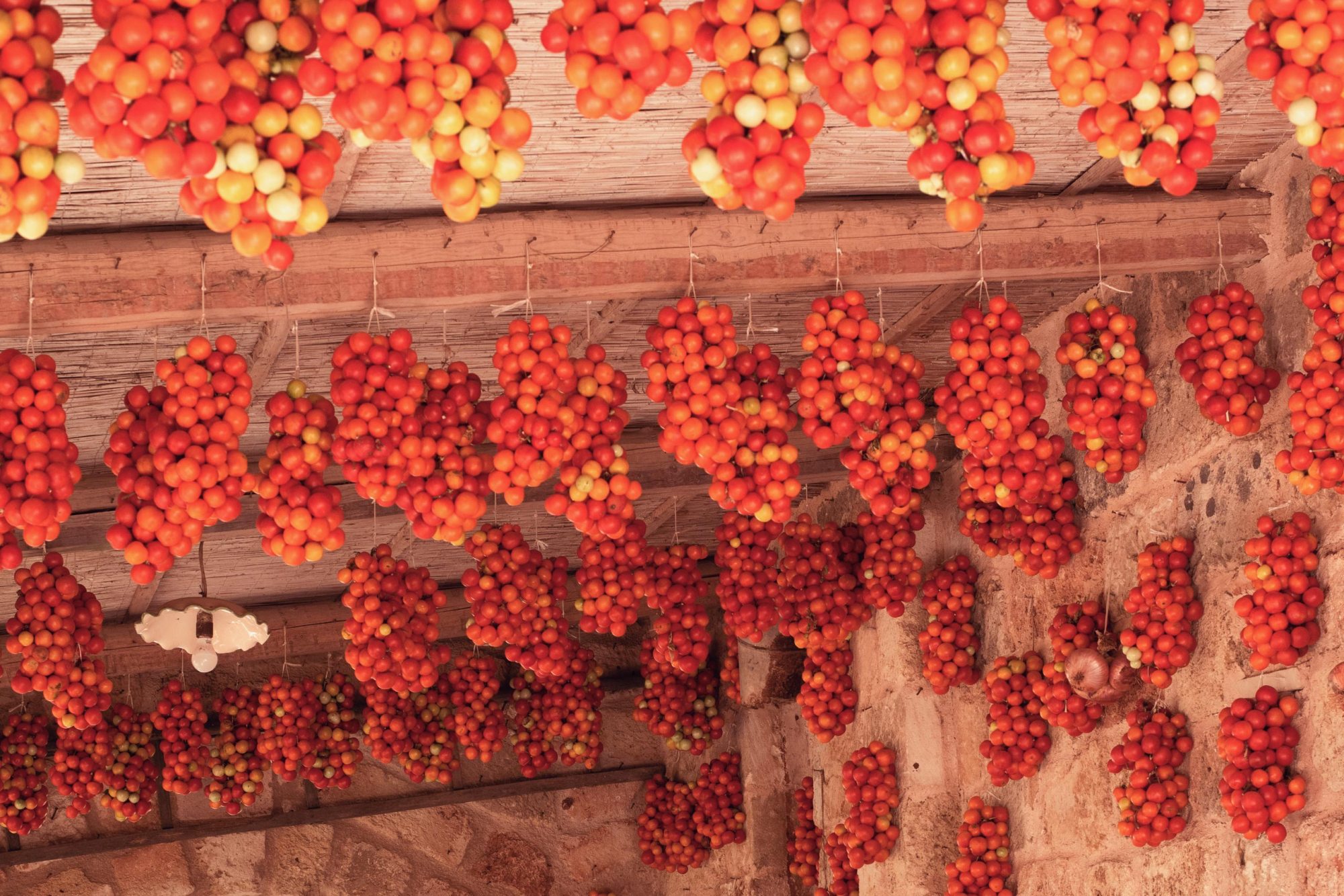Slow Food movement: eating fresh & local in Puglia

If you come on holiday to Italy you might occasionally spot the term ‘slow food’ or the snail symbol, but do you know what they stand for?
Even though it’s been around since the 1980s, not everyone knows about the Slow Food movement or they might know about it under different names, like farm-to-table.
Table of contents
> The values Slow Food stands for
> Slow Food in Italy
> How to avoid ripoffs and eat well in Italy
> Eating in Puglia: local foods and seasonal produce
The values Slow Food stands for
So what it is all about and why is it important?
The slow food movement encourages us to think more about where our food has come from and what effects this could have on our planet. At its core, the principles of sustainability as well as preserving traditions. Above all, it champions local and seasonal food that’s been grown ethically, both for humans and the environment too.
Slow Food in Italy
The person that first brought it to the foreground, to the media and institutions is Carlo Petrini, an Italian who saw our local produce forgotten by the younger generations in favor of more mainstream but less sustainable farming. He is now a well-respected figure who went on campaigning for these values, opening Slow Food chapters all over the world.
Since food (and conviviality) is so important in the Italian way of life, it’s not surprising that the movement was born here and it was so rapidly adopted here.
Amongst Slow Food’s activities is the protection of and preservation or specific vegetables, fruits and animal species that are important for and tied to specific local communities. To simplify things, the work of Slow Food is in some ways similar to that of WWF.
They also ensure that high-quality standards are respected to grow and/or produce these items. Only by following these stringent rules you get the Slow Food stamp of approval. This is a guarantee that the food you’ll get on your table is genuine and ethical.
Restaurants, chefs, shops and cafes that adhere to those values are numerous here in Italy and it’s easy to see why it’d be wiser to patron those rather than others. These are also the types of restaurants we chose to include in our self-drive holidays.

How to avoid ripoffs and eat well in Italy
People who come on holiday in Italy are often scared that expectations won’t match reality when it comes to food, they’re afraid they might get scammed in tourist traps and that the hype around Italian food isn’t real.
How can you eat well in Italy then? It all starts with informing yourself. It’s easy, really:
- know beforehand what local delicacies and specialties there are and just eat those (here’s a primer for you if you’re traveling to Puglia);
- check what’s in the season when you’re going to travel and again, stick to that;
- lookout for any mention of ‘km 0’, Slow Food or the burgundy snail (symbol of Slow Food);
- check the menu for asterisks, they indicate if something is frozen.
We understand it may not be easy to wait an entire year or longer for your trip to Italy and then not being able to try some of your favorite dishes if an ingredient is not in season, but trust us that it’s for the better if you really want to eat well during your trip!
Eating in Puglia: local foods and seasonal produce
Since we’re based in Puglia and offer road trip holidays to discover this beautiful region, here’s our guide to the best local delicacies protected by Slow Food. As we wrote above, if you know about them, then you can choose your restaurant wisely and pick the best dish out of a menu.
Tomatoes
- Torre Canne Regina Tomato
- Manduria Cherry Tomato
- Crispiano Giallorosso Tomato
- Torre Guaceto Fiaschetto Tomato
For many, tomatoes are synonymous with Italy and they are for sure a staple of the Mediterranean diet. This red gold is harvested in summer and it’s the king of salads and hassle-free meals. The ripest fruits are used to make passata, while some families leave the tomatoes to dry out on racks made from canes during the month of August. The seeds from the best fruits, those picked from the base of the plant, are saved for the next season.
Cheese
- Gravina Pallone
- Gargano Caciocavallo Podolico
When it comes to cheese and Italy, many think of Northern Italy and Parmesan cheese or Naples and its mozzarella. Not many realize that Puglia has a long-standing cheese-making tradition and that Puglia cheese is varied and delicious. These are two examples that stand proud alongside Puglia burrata and other cheese.
Vegetables and legumes
- Carpino Fava Bean
- Acquaviva Red Onion
- Murgia Carsica Black Chickpea
- Polignano Carrots
Puglia’s climate makes it an ideal setting for growing vegetables, so it’s no surprise that vegetables are the most represented in this list. They’re often the base of Pugliese cuisine and you’ll be impressed by the sheer variety of vegetables that can be found in this region.
Fruit and nuts
- Gargano Citrus Fruits
- Toritto Almond
Be honest, if you think of lemons, what comes to mind, besides Beyoncé, that is? The Amalfi coast. And what about oranges? Sicily. Well, Puglia has got nothing to envy and this list proves it! While citrus tends not to grow along Italy’s Adriatic coast, there’s an exception: Puglia’s Gargano peninsula. If you needed further testament that Puglia is special, there you have it!
Pastries and baked goods
- Ceglie Biscuit
- Traditional Alta Murgia Bread
Pasticciotto may be Puglia’s most famous sweet treat, but there’s more! If you’ve got a sweet tooth then you’ll find yourself in heaven when in Puglia, a region that boasts many pastries and desserts that make the most of local ingredients, like almonds. And if you instead prefer savory to sweet, then Altamura bread won’t leave you disappointed. The loaves, in a wide-brimmed hat shape (called “skuanete” in dialect) andthe golden crust make it the perfect companion to preserves and marmalades and the ideal base for bruschetta.
